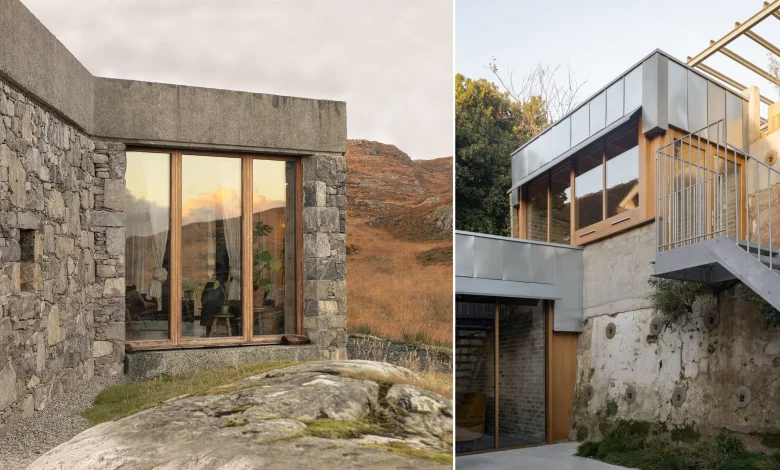RIBA reveals the first pair of shortlisted structures for the House of the Year 2025

The RIBA House of the Year was first awarded in 2013, focusing on new builds and extensions in the UK. Won by 31/44’s Six Columns in South London in 2024, the Green House by Hayhurst & Co in 2023 and David Kohn Architects’ The Red House in 2022, the award encompasses a broad range of work, from grand contemporary country houses (Flint House and Caring Wood House) to extensions like the House on the Hill, as well as town dwellings. This year offers a little bit of everything, starting with these two structures.
RIBA House of the Year 2025, RIBA.org
Caochan na Creige by Izat Arundell
Caochan na Creige by Izat Arundell
(Image credit: Richard Gaston)
The first project to be nominated is a self-build project, built on a remote site in Bay of Harris in the Outer Hebrides by Eilidh Izat and Jack Arundell of Izat Arundell. The duo, partners in work and life, designed and constructed the modest one-bedroom house on a rocky site overlooking the sea to the island of Rùm.
The entrance porch, Caochan na Creige by Izat Arundell
(Image credit: Jack Arundell)
At just 85m2, Caochan na Creige is one of the smallest projects to be nominated for the House of the Year. With a timber structure and local stone cladding, there’s also an exposed concrete ring beam to add additional texture to complement the rocky site. Inside, lime plaster walls and polished concrete floors are paired with Scottish larch ceilings and bespoke beech joinery made by Izat’s furniture maker brother Alastair.
Detail of the stone clad walls, Caochan na Creige by Izat Arundell
(Image credit: Richard Gaston)
Caochan na Creige (the name means ‘little quiet one by the rock’) is intensely personal, not just because of the physical labour required to build it but because every nook and cranny has been shaped to cater to the couple’s possessions and artworks, as well as the views across the sea and glen. The constructed process also involved working with many local artisans, helping foster stronger community ties for this small practice.
The house in the Hebridean landscape
(Image credit: Richard Gaston)
IzatArundell.com, Izat.Arundell
Hastings House by Hugh Strange Architects
Hastings House by Hugh Strange Architects
(Image credit: Rory Gaylor)
The house, which was also shortlisted for this year RIBA Stirling Prize (losing out to Appleby Blue Almshouse by Witherford Watson Mann) follows on from earlier domestic projects like the house reconfiguration in Peckham, South London.
Hastings House by Hugh Strange Architects
(Image credit: Rory Gaylor)
In Hastings, however, Hugh Strange and his team were tasked with updating a 19th-century detached house in the heart of the town centre, with a precipitous level change across the site. The main house has been retained and restored, with special focus given to original features like mouldings, stained glass, fretted barge boards and decorative clay tiles. The real shifts in perception come at the rear.
Hastings House by Hugh Strange Architects
(Image credit: Rory Gaylor)
An existing extension was replaced with a series of galvanised steel units that step the multi-terraced rear garden. Each of these news rooms is given large timber sliding doors, while the existing retaining wall is paired with a new concrete slab yet retains the scars of use over the centuries. It’s a series of interventions that enhances the original house without scouring the site of its history, with contemporary materials and details providing a strong contrast to what went before.
Hastings House by Hugh Strange Architects
(Image credit: Rory Gaylor)
HughStrange.com, @HughStrangeArchitects





